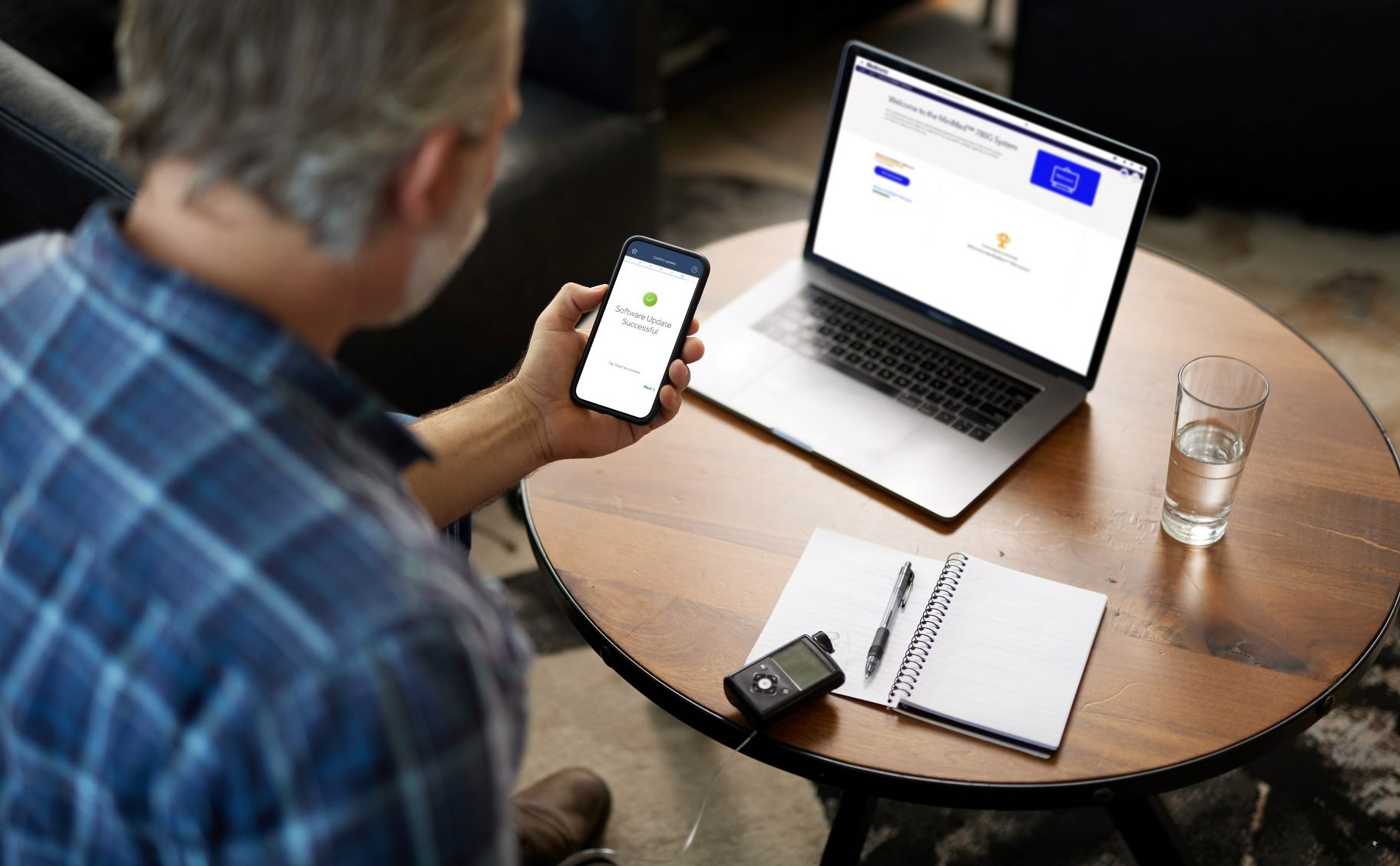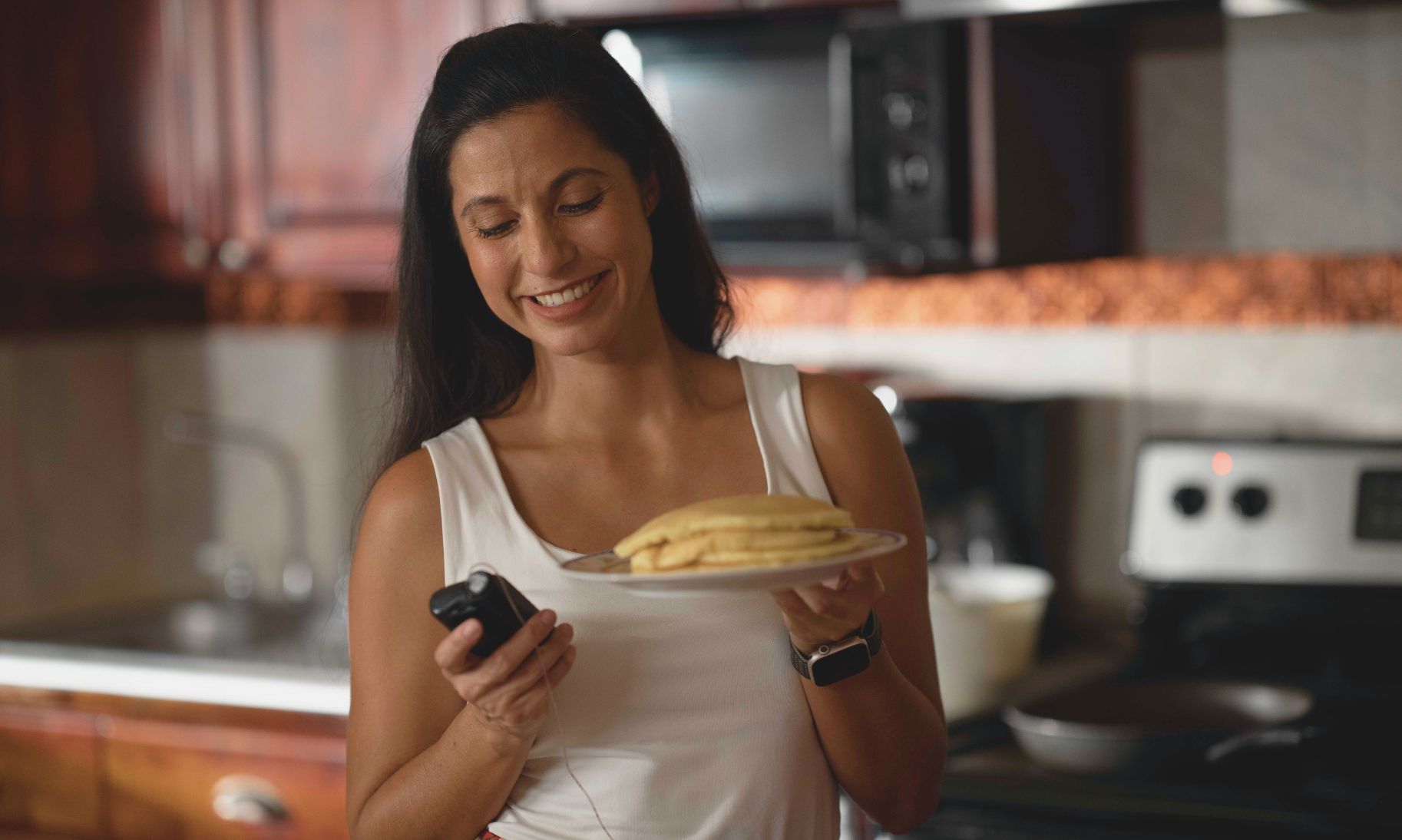Exercise strategies for people on the MiniMed 770G system or the MiniMed 670G system


Information about guest writer:
Lyndsay is a Registered Dietitian and Certified Diabetes Care & Education Specialist whose passion to advocate wellness in those living with diabetes comes from her personal experience of having T1D diagnosed at the age of 3. Since 2011, Lyndsay has worked as a Clinical Territory Manager with Medtronic and is also on staff with Diabetes Training Camp. She loves being active outdoors in all seasons, and holds athletic accomplishments including being a two-time Ironman finisher, JDRF century ride participant, and playing roller derby with the Brewcity Bruisers for 5 years. We’re excited to have her share some of her wisdom.
Exercise Strategies
Exercise can be both frustrating and overwhelming for anyone living with diabetes. Participating in regular physical activity has numerous health benefits, but just like so many other aspects of diabetes, managing it is not “one size fits all.” Here are some tips and considerations to help you reach your fitness and diabetes goals while using the MiniMed 770G system or the MiniMed 670G system in Auto Mode.

- Try Temp Target: The standard Auto Mode target is 120 mg/dL, but you can temporarily change your target to 150 mg/dL if you’re concerned about going low, like during exercise. Every person is different, but a good starting point is to begin the Temp Target 1-2 hours before the activity begins, and keep it going through the activity. Some people continue their Temp Target even after the activity is over.
- You can start a Temp Target by going into the main menu. It can be set for up to 12 hours.
- Supplement with carbs: For people using SmartGuard Auto Mode, consuming carbohydrates continues to be a strategy to help prevent lows during and after exercise. The amount of carbs will depend on many factors including activity type, duration, intensity, active insulin and starting sugar levels.
- Snacking before a workout can still be helpful depending on your starting glucose level and active insulin. But eating carbs without bolusing can cause auto basal to increase, which may result in lows. You may find you need to eat fewer carbs as a pre-exercise snack than you did before starting to use Auto Mode.
- Many people using Auto Mode have found it helpful to consider active insulin when deciding how many carbs to consume before a workout. A group of Endocrinologists who looked at exercise strategies for people with T1D found that the higher the active insulin was before a workout, the higher the carb intake needed to be to avoid lows.1
- Consuming carbohydrate during a workout can be another strategy to help avoid lows. Of course, for any endurance activity, you should be fueling the body with carbohydrates not only to avoid lows, but also to fuel your muscles.
- Suspend: Exercise generally increases insulin sensitivity, so you may need to briefly suspend the insulin to help reduce the likelihood of a low during exercise. Keep in mind that even though Auto Mode is adjusting basal based on your sugar levels, exercise increases insulin sensitivity, and you could still experience a low. In this case, a brief suspend could be helpful.
Additional Tips
The following strategies can be helpful for those taking insulin, and are still important to consider when using your insulin pump system:
- Consider exercise and bolus timing: If you’re working out while your meal insulin is peaking (within the first 1-2 hours after a bolus), your glucose levels could fall faster than you’re accustomed to seeing. Whenever possible, try exercising before you eat or 3-4 hours after a bolus (when the Active insulin is zero or low). If this is difficult with your schedule, you may need to eat extra carbs during exercise.
- Know your sensitivity related to the time of day: Some people notice that they are more sensitive to insulin and exercise later in the day, compared to the morning. For example, you may discover that you do not need to set a Temp Target before a run in the morning, however in the afternoon using a Temp Target or additional carbs is needed.
- Learn how your body responds to your activity: Knowing your typical glucose response to the activities you do can be helpful for planning. For example, a run may require a Temp Target and consuming carbohydrates, whereas a yoga class or strength training might not require any additional planning or action. It all depends on you and your body.
- Pay attention to sugar levels after exercise: Since Auto Mode adjusts the basal every 5 min, some find they do not experience as many lows after exercise as they saw with traditional pump therapy. For others who notice they are still quite sensitive to insulin, consider trying a Temp Target for overnight.
We hope these tips help you take on exercise with confidence and keep up with that resolution!
These tips are recommendations only. You should consult your healthcare team 1) before starting a new or changing your therapy plan and 2) before starting any exercise or nutrition program to determine if it is right for your needs.
References:
1 Michael C Riddell, Ian W Gallen, Carmel E Smart, et al. Lancet Diabetes Endocrinol 2017; 5:377-90.
Important Safety Information
MINIMED™ 770G SYSTEM WITH SMARTGUARD™ TECHNOLOGY
The MiniMed™ 770G system is intended for continuous delivery of basal insulin (at user selectable rates) and administration of insulin boluses (in user selectable amounts) for the management of type 1 diabetes mellitus in persons two years of age and older requiring insulin as well as for the continuous monitoring and trending of glucose levels in the fluid under the skin. The MiniMed™ 770G System includes SmartGuard™ technology, which can be programmed to automatically adjust delivery of basal insulin based on continuous glucose monitoring (CGM) sensor glucose values (SG) and can suspend delivery of insulin when the SG value falls below or is predicted to fall below predefined threshold values.
The Medtronic MiniMed™ 770G System consists of the following devices: MiniMed™ 770G Insulin Pump, the Guardian™ Link (3) Transmitter, the Guardian™ Sensor (3), one-press serter, the Accu-Chek® Guide Link blood glucose meter, and the Accu-Chek® Guide Test Strips. The system requires a prescription.
The Guardian™ Sensor (3) has not been evaluated and is not intended to be used directly for making therapy adjustments, but rather to provide an indication of when a fingerstick may be required. All therapy adjustments should be based on measurements obtained using a blood glucose meter and not on values provided by the Guardian™ Sensor (3).
All therapy adjustments should be based on measurements obtained using the Accu-Chek® Guide Link blood glucose meter and not on values provided by the Guardian™ Sensor (3). Always check the pump display to ensure the glucose result shown agrees with the glucose results shown on the Accu-Chek® Guide Link blood glucose meter. Do not calibrate your CGM device or calculate a bolus using a blood glucose meter result taken from an alternative site. It is not recommended to calibrate your CGM device when sensor or blood glucose values are changing rapidly, e.g., following a meal or physical exercise.
WARNING: Do not use the SmartGuard™ Auto Mode for people who require less than 8 units or more than 250 units of total daily insulin per day. A total daily dose of at least 8 units, but no more than 250 units, is required to operate in SmartGuard™ Auto Mode. |
WARNING: Do not use the MiniMed™ 770G system until appropriate training has been received from a healthcare professional. Training is essential to ensure the safe use of the MiniMed™ 770G system.
Pump therapy is not recommended for people whose vision or hearing does not allow recognition of pump signals and alarms. Pump therapy is not recommended for people who are unwilling or unable to maintain contact with their healthcare professional. The safety of the MiniMed™ 770G system has not been studied in pregnant women. For complete details of the system, including product and important safety information such as indications, contraindications, warnings and precautions associated with system and its components, please consult http://www.medtronicdiabetes.com/important-safety- information#minimed-770g and the appropriate user guide at http://www.medtronicdiabetes.com/download-library
MINIMED 670G™ SYSTEM
The Medtronic MiniMed™ 670G system is intended for continuous delivery of basal insulin (at user selectable rates) and administration of insulin boluses (in user selectable amounts) for the management of type 1 diabetes mellitus in persons, seven years of age and older, requiring insulin as well as for the continuous monitoring and trending of glucose levels in the fluid under the skin. The MiniMed™ 670G system includes SmartGuard™ technology, which can be programmed to automatically adjust delivery of basal insulin based on Continuous Glucose Monitor sensor glucose values and can suspend delivery of insulin when the sensor glucose value falls below or is predicted to fall below predefined threshold values. The system requires a prescription.
The Guardian™ Sensor (3) glucose values are not intended to be used directly for making therapy adjustments, but rather to provide an indication of when a fingerstick may be required. A confirmatory finger stick test via the CONTOUR®NEXT LINK 2.4 blood glucose meter is required prior to making adjustments to diabetes therapy. All therapy adjustments should be based on measurements obtained using the CONTOUR®NEXT LINK 2.4 blood glucose meter and not on values provided by the Guardian™ Sensor (3). Always check the pump display to ensure the glucose result shown agrees with the glucose results shown on the CONTOUR®NEXT LINK 2.4 blood glucose meter. Do not calibrate your CGM device or calculate a bolus using a blood glucose meter result taken from an Alternative Site (palm) or from a control solution test. It is not recommended to calibrate your CGM device when sensor or blood glucose values are changing rapidly, e.g., following a meal or physical exercise. If a control solution test is out of range, please note that the result may be transmitted to your pump when in the “Always” send mode.
WARNING: Medtronic performed an evaluation of the MiniMed™ 670G system and determined that it may not be safe for use in children under the age of 7 because of the way that the system is designed and the daily insulin requirements. Therefore this device should not be used in anyone under the age of 7 years old. This device should also not be used in patients who require less than a total daily insulin dose of 8 units per day because the device requires a minimum of 8 units per day to operate safely. |



